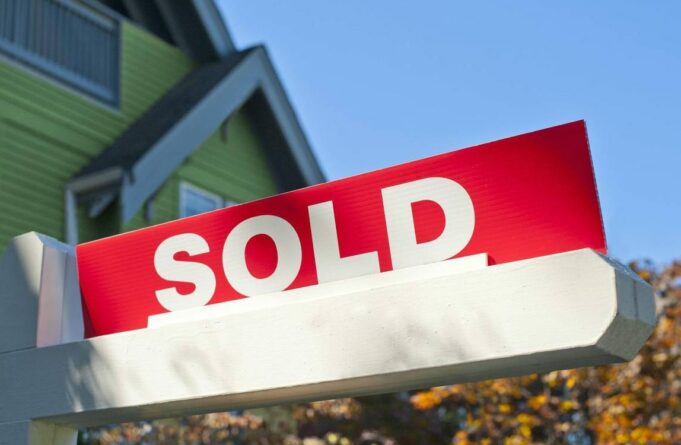Written by Jeff Lazerson
A unique, low-entry mortgage may be a salve for high Southern California home prices, offering one option that most affordable housing loan programs don’t address.
The loan, a first that I’ve ever seen, is offered through Community Development Financial Institutions and doesn’t care what applicants look like or where they want to live. The minimum combined loan amounts range from $150,000 to a maximum of $3.5 million. (The first loan cap is $3 million and the second $500,000).
As long as the borrower has at least 15% down for an owner-occupied home or condo, a middle FICO score is at least 680 and some house payment reserves, they might just be able to buy a place to call home.
Buyer beware: The mortgage rates are high, though, in the 7% to 8% range.
The income portion of this particular mortgage application is a blank slate. Volatile, irregular or transitional employment (due to COVID, for example), cash businesses, retirees, seasonal or gig workers and even recent immigrants may qualify. Proving the ability to repay is a non-starter. This is NINJ (no income, no job) with a small down payment.
Today’s mortgage standards are not designed for borrowers with outside-the-box or atypical income means to make monthly house payments. The conventional home financing structure is a tight, complicated institutional underwriting box. If you don’t fit the box, too bad. Every day across America would-be homebuyers are denied access to mortgages because they can’t prove the government’s litmus-test standard for the ability to repay.
Those systematically unqualified buyers are forced to rent, often paying top dollar. Never mind their income. There are no official regulations for landlords to income-qualify or show the rental applicants’ ability to pay monthly rent. Non-income qualified applicants sign leases every day so long as they have the upfront funds to satisfy the landlord.
Those who can’t pay often are staring eviction square in the eye. So, what’s the difference between that and a no-qualifier purchase home loan?
Most family wealth comes from or starts with homeownership equity, mortgage debt pay-downs and payoffs. Without money in hand, it’s hard to build new family wealth in America, especially when traditional loan approvals are out of reach.
Empowered by the U.S. Department of the Treasury, Community Development Financial Institutions, two of which are offering this loan , are exempt from certain consumer financing rules and regulations (like proving the ability to repay). The big idea is to find various ways to expand economic opportunities like homeownership for the unserved and underserved.
Here’s an example of how the Community Development loan works:
A buyer lands a median-priced home at $797,000, putting 15% down or $119,550. To avoid mortgage insurance, the first mortgage is $597,750 and the piggyback loan is $79,700 for a combined $677,450. Both loans in this example are 30-year, fixed-rate terms and can both be interest-only for the first 10 years. After 10 years, borrowers have 20 remaining years to amortize and pay off the loans.
Assuming a 740 FICO score, the interest-only first loan payment at a 7.25% interest rate is $3,611. The second interest-only loan payment at 8.5% is $565. Monthly property taxes are $830 (assuming a 1.25% tax rate), and let’s estimate homeowners’ insurance is $175 per month. The total monthly payment is $5,181.
In addition to the payment, this first loan would cost about 1.625 points or $9,713, while the second would cost 1 point or $797. Additionally, there are settlement charges like escrow, title, appraisal and underwriting. The buyer is looking at roughly $17,000 in total points, hard costs and escrow impounds. In this example, they’ll also need three months of house payments in reserve or $15,543. The down payment, closing costs and payment reserves add up to $152,093.
It should be noted that the down payment and closing costs can be a gift. The house payment reserves must come from the borrowers’ own money. Reserves must have been seasoned in the borrower’s account for at least one month.
Black or Hispanic applicants will get one-quarter percent off the first loan rate but not the second. All in, the house payment would be $156 lower in the above example at a 7% interest rate.
This loan option, with slightly different terms, also includes refinances and cash-out refinances along with second homes and investment properties.
With as little as 15% down and the ability to do little more than fog a mirror to get in, could some folks naively buy and not be able to keep up with the payments, eventually losing the home and the down payment to foreclosure? Of course.
So, no it’s not a perfect system. But it does give the benefit of the doubt in this imperfect mortgage financing world to a borrower who has some shekels and decent credit. Better to rule folks in than to rule them out.
Freddie Mac rate news
The 30-year fixed-rate averaged 5.1%, fifteen basis points lower than last week. The 15-year fixed-rate averaged 4.31%, twelve basis points lower than last week. The 5-year ARM averaged 4.2%, twelve basis points higher than last week.
The Mortgage Bankers Association reported a 1.2% decrease in mortgage application volume from the previous week.
Related Articles
Housing |
Biggest jump ever: Southern California house payments up 37%, topping $3,000 a month
Housing |
US housing starts, building permits stall as mortgage rates bite
Housing |
House hunters triple use of adjustable-rate mortgages
Housing |
Mortgage rates hit 5.3%, highest since July 2009
Housing |
As interest rates rise, lenders offer creative mortgages, incentives
Bottom line: Assuming a borrower gets the average 30-year fixed rate on a conforming $647,200 loan, last year’s payment was $803 less than this week’s payment of $3,514.
What I see: Locally, well-qualified borrowers can get the following fixed-rate mortgages without points: A 30-year FHA at 4.375%, a 15-year conventional at 4.125%, a 30-year conventional at 4.875%, a 15-year conventional high balance ($647,201 to $970,800) at 4.875%, a 30-year high balance conventional at 5.25% and a jumbo 30-year purchase, fixed at 4.75%.
Note: The 30-year FHA conforming loan is limited to loans of $562,350 in the Inland Empire and $647,200 in LA and Orange counties.
Eyecatching loan of the week: A 30-year jumbo adjustable mortgage, locked for the first five years at 3.75% with 1 point.
Jeff Lazerson is a mortgage broker. He can be reached at 949-334-2424 or jlazerson@mortgagegrader.com.
Source: OC Register











